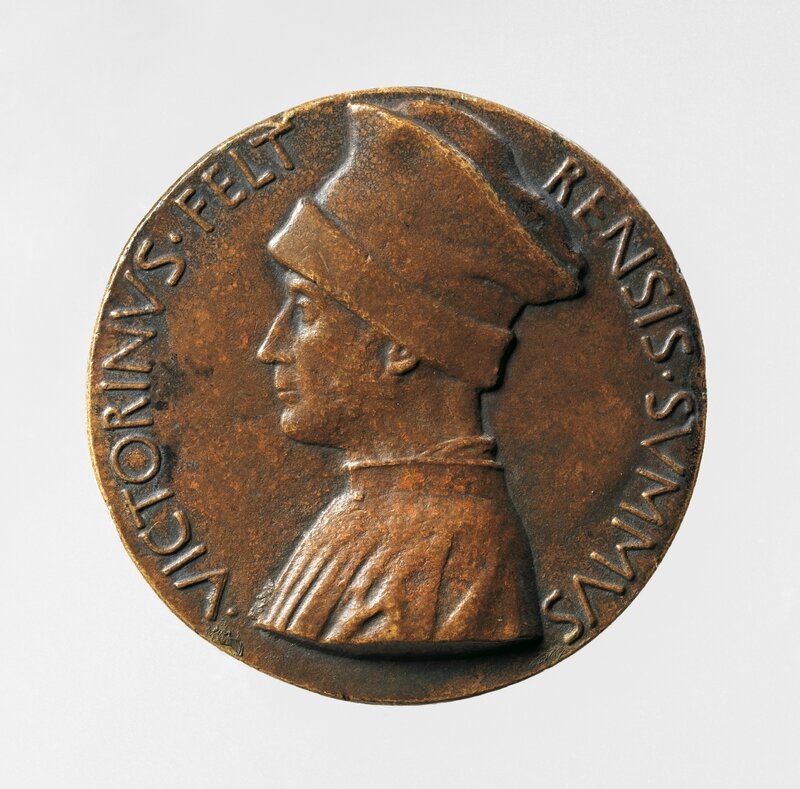Pisanello, Portrait medal of Vittorino Rambaldoni da Feltre (obverse); A Pelican (reverse), model 1446–47
Pisanello (Antonio Pisano) (Italian, Pisa or Verona by 1395–1455), Portrait medal of Vittorino Rambaldoni da Feltre (obverse); A Pelican (reverse), model 1446–47 (possibly cast 15th or 16th century). Bronze (yellowish copper alloy with brown patina and traces of black lacquer or wax). Diam. 6.5 cm, wt. 107.27 g. Robert Lehman Collection, 1975, 1975.1.1302 © 2000–2016 The Metropolitan Museum of Art.
Active in Verona and the Italian courts, the celebrated master Pisanello left behind a significant legacy, including a large corpus of drawings and several paintings. He was also the inventor of the commemorative portrait medal. Inspired by Roman coins, with their portraits of rulers and allegorical representations on the reverse, the medals commemorated individuals or events and functioned as gifts and mementoes.
Vittorino Rambaldoni da Feltre was a celebrated humanist and teacher whom the marquess of Mantua, Gianfrancesco Gonzaga, engaged to educate his children. Ludovico Gonzaga, a former student, probably commissioned the medal to honor his beloved teacher around the time of Vittorino’s death.
On the medal’s reverse is a bird feeding its young. It may represent a pelican, a traditional symbol of Christ’s sacrifice due to the belief that the pelican fed its young from the blood of a self-inflicted wound. The bird has also been identified as a phoenix, which, according to one of Vittorino’s pupils, represented his self-sacrifice as a teacher.

/https%3A%2F%2Fprofilepics.canalblog.com%2Fprofilepics%2F1%2F0%2F100183.jpg)
/https%3A%2F%2Fstorage.canalblog.com%2F03%2F02%2F119589%2F96711876_o.jpg)
/https%3A%2F%2Fstorage.canalblog.com%2F11%2F31%2F119589%2F94773502_o.jpg)
/https%3A%2F%2Fstorage.canalblog.com%2F20%2F83%2F119589%2F94772815_o.jpg)
/https%3A%2F%2Fstorage.canalblog.com%2F26%2F72%2F119589%2F75604929_o.jpg)
/https%3A%2F%2Fstorage.canalblog.com%2F59%2F60%2F119589%2F26458628_o.jpg)




/image%2F1371349%2F20240403%2Fob_035d65_dp-1241-015.jpg)
/http%3A%2F%2Fstorage.canalblog.com%2F40%2F64%2F119589%2F75403027_o.jpg)
/http%3A%2F%2Fstorage.canalblog.com%2F00%2F58%2F119589%2F75402995_o.jpg)
/image%2F1371349%2F20240502%2Fob_bd3c09_telechargement-4.jpg)